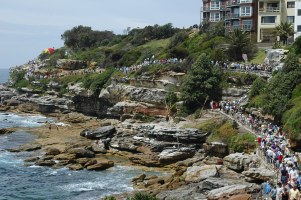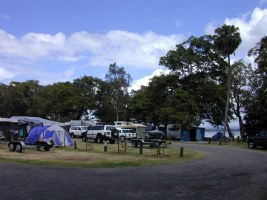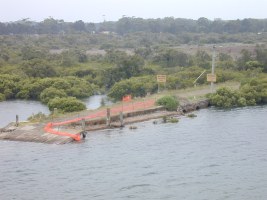The annual numbers of tourists undertaking day-trips and overnight visits to coastal waterways is a suggested indicator for State of the Environment reporting (e.g. Indicator 7.7 in the Estuaries and the Sea volume)1.


Photo 1. Sculpture by the Sea along the Bondi to Tamarama coastal walk (a), and at Cottesloe Beach (b). The Sydney event is Australia’s largest annual outdoor free public exhibition of contemporary sculpture, attracting over 450,000 visitors. (Photo (a) by Chris Fitzgerald; and photo (b) and the sculpture by Bruce Radke).
Issues arising from coastal tourism
Coastal areas frequented by tourists may have to contend with the following issues:
- destruction of critical habitat areas for development purposes (e.g. resorts, hotels, camp grounds, golf courses, restaurants, shops and marinas) and general infrastructure (e.g. roads, airport) (photo’s 2a,b), and through recreational trampling and off-road vehicles;
- impacts associated with fishing pressure;
- declines in water quality due to enhanced loads of fine sediments, pathogenic organisms and nutrients (with potential for eutrophication and related issues);
- loss of biodiversity;
- visual impacts; and
- displacement of traditional owners and users.


Photo 2. (a) A campsite at Myall Lakes, NSW, and (b) boat ramp impinging on mangroves across from Tea Gardens, NSW. (photos by Caroline Wenger)
Existing information and data
More information on coastal tourism as an indicator (e.g. reporting scales, outputs, analysis and interpretation and data sources) can be found in the Estuaries and the Sea volume of Environmental Indicators for National State of the Environment Reporting1.
- Ward, T., Butler, E. and Hill, B. 1998. Environmental Indicators for National State of the Environment Reporting, Estuaries and the Sea, Commonwealth of Australia, pp. 81. ↩ ↩


